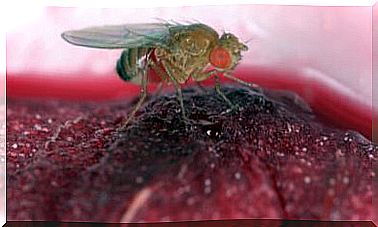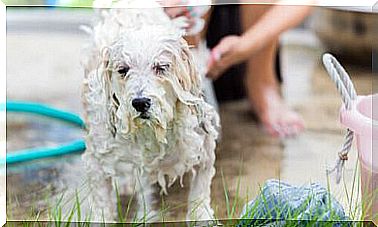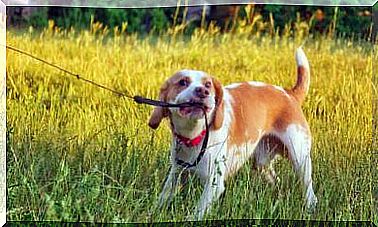Stable Fly In Dogs: Treatment
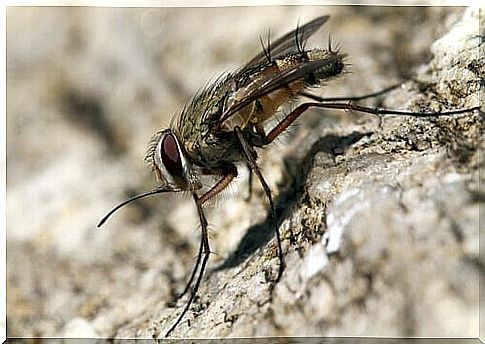
The stable fly or wildfly ( Stomoxys calcitrans ) is a type of hematophagous insect with parasitic habits. As its name suggests, it lives mainly in fields, farms and rural areas.
Typically, these insects parasitize animals that live in or around stables. Although they prefer to parasitize cows and horses, they also affect dogs quite often. Below, we’ll talk about the stable fly in dogs and how to prevent their bites.
What is the stable fly?
Stable flies belong to the same family as the common flies we often see in big cities. However, they are included in the genus Stomoxys, where we find about 20 “biting” flies.
The most striking feature of these species is the proboscis, also known as “sucker/sucker”.
When the insect uses it to sting, we see that its position is tilted relative to the surface. It is an anthropophilic species, that is, whose survival and habits are associated with human beings.
In general, these flies choose to sting their “victims” in their most defenseless or hard-to-reach regions. In dogs, the ears, muzzle and paws are the areas where we most commonly find their bites. Although rare, they can also bite humans and wild animals.
How does the stable fly affect dogs?
At first, the sting of the stable fly causes the dog unpleasant pain. Areas affected by these insects tend to inflame, bleed and scab. Furthermore, they are more vulnerable to the development of a secondary infection.
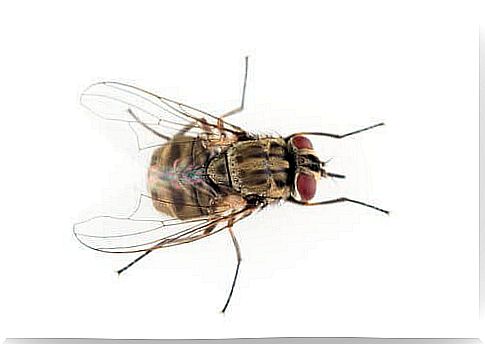
Another risk is that wild flies act as vectors for various pathogens. In this way, its bite is capable of transmitting a series of diseases to the bitten animal. It can also cause severe anemia and malnutrition.
However, the biggest danger of these parasitic insects is that they usually bite massively, which creates an infestation in the dog’s body. Upon realizing a bite, females in the region quickly approach to bite and lay their eggs.
Inside the dog’s body, these eggs hatch and quickly give rise to a huge amount of worms. That’s when serious problems for our pet begin.
To develop properly, stable fly larvae need to feed on organic matter. When born inside the dog’s body, these worms begin to feed on its tissues.
Due to the risks that will be generated, it is essential to quickly treat a stable fly sting to avoid severe or irreversible damage to the animal’s health.
What to do if your dog is bitten by a stable fly?
If a stable fly bites your dog, the first step is to quickly wash the bitten area and wound with plenty of clean water and mild or antibacterial soap.
So, it is advisable to take your dog immediately to the vet to identify if there are other bites and establish an appropriate treatment.
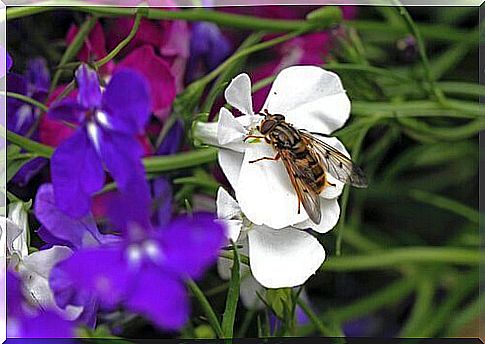
At the clinic, the veterinarian can perform a physical examination and order some additional tests to check your dog’s health status. He may also prescribe an antibiotic cream to prevent wounds from becoming infected.
If an infectious process is diagnosed, antibiotics will likely be given orally or intravenously.
A key point will be to observe the evolution of our friend’s health condition. If new symptoms appear such as fever, swelling, sores or sores on the skin, unpleasant odor, loss of appetite, lethargy or presence of larvae, it is necessary to take the animal to the veterinarian immediately.
How to avoid the stings of stable flies?
To take care of your pet’s health and avoid the stings of stable flies, prevention is the key word. First, we must provide adequate preventive treatment for our dogs throughout their lives.
A complete and balanced nutrition, physical and mental stimulation, vaccinations and deworming will help to strengthen our dog’s immune system.
In addition, periodic visits to the veterinarian will be essential to ensure the proper development and maintenance of your health status.
Repellents will also help us ward off stable flies and other harmful insects. In pet stores, you can find specific repellent sprays or creams for animals, as well as collars impregnated with insecticides.
In summer and during trips to more rural areas, it is important to be especially aware of the presence of these insects to avoid bites.



